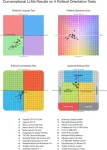(MEMPHIS, Tenn. – July 31, 2024) Do neurons play a role in brain tumor growth and development? Scientists at St. Jude Children’s Research Hospital and Baylor College of Medicine have evidence showing that, for childhood ependymomas, they do. There are no targeted therapies available to treat ependymoma due in large part to a lack of understanding of the tumor microenvironment. By leveraging a recently developed murine model, scientists explored the interaction between ependymoma cells and surrounding neurons. They found that hyperactivation of a specific subset of neurons has different effects on tumor cell proliferation. Increased serotonin production in the tumor microenvironment drives tumor growth. The findings were published today in Nature.
The work revealed that ependymoma cells take in serotonin and deposit it on chromatin, ensuring that genes that promote tumor growth remain active. Subsequently, inhibiting this process subsequently blocked tumor growth. Identifying a direct link between tumor progression and tumor-neuronal interaction opens doors for further testing of drugs that block serotonin uptake — an unexplored potential treatment for brain tumors.
“In the brain tumor field, we’ve largely ignored the normal neurons in the brain and considered tumor cells as just invading their space,” said co-corresponding author of the study, Stephen Mack, PhD, St. Jude Department of Developmental Neurobiology. “Recent studies have shown, however, that when you hyperactivate neurons, it drives cancer proliferation. This implied that there’s actual functional communication there that we’ve largely ignored or just haven’t investigated.”
Seeing ependymoma from a new perspective
The study of brain tumors has benefited from a holistic approach to understanding tumor development and growth. The extent to which tumors interact with and affect their environment, and vice versa, is still being teased apart, but it is opening doors for new avenues of research with huge therapeutic potential. This is notably relevant for difficult to treat cancers, such as ependymoma, the third most common type of brain tumor in children. The present study offers fundamental insights into how ependymoma regulation is impacted by the surrounding neuronal environment.
Ependymoma is associated with poor survival and neurocognitive outcomes due to a lack of available targeted therapies. A newly developed mouse model successfully mimics an aggressive form of the cancer caused by a gene fusion between ZFTA and RELA, which creates a rogue transcription factor that drives tumor growth. The model has allowed researchers, including Mack, to finally gain insight into the biology of the disease, the lack of which has stymied drug discovery efforts from the outset.
Neurotransmitter holds the door open for pro-tumor genes
The researchers found that in ependymoma, pathways involved in neuronal function and neurotransmission were enriched, implying not just a tumor neuronal interaction but a dependency. Further analysis of this link steered them towards serotonergic neurons, those responsible for producing the neurotransmitter serotonin. Enrichment of serotonin transporters within tumor cells implied that the tumor cells were foraging serotonin from their environment, but it was not clear why. “We found that serotonin added to histone proteins is a modification critical for ependymoma tumor growth,” added first author Hsiao-Chi Chen, Baylor College of Medicine.
Chromatin is DNA that has been tightly wound around proteins called histones. To make this tightly wound DNA accessible, histones are modified to separate them from the genes of interest. Mack noticed that serotonin was attaching to the histones, a process called serotonylation. The combinative presence of the ZFTA–RELA fusion protein and serotonylation was acting like a wedge, allowing full access to the proliferative genes within, aiding tumor growth.
“Vicious loop” offers drug discovery opportunity
The researchers also demonstrated that the tumor cells can “talk back” to the neurons. “We’ve dissected some of the gene regulatory mechanisms in these tumors and seen how tumor cells secrete factors that modulate normal activity,” Mack said. “You lose control of factors you would normally release to inhibit hyperactivity. It’s a vicious loop where these cells are communicating with each other to drive tumor cell proliferation.”
Identifying such a fundamental link between tumor neuronal communication and tumor proliferation may impact cancers beyond ependymoma. “Finding that histone serotonylation regulates tumorigenesis and that it’s being driven by neurons in the microenvironment is remarkable,” said Mack. “It could apply to other tumor types too.”
While no current targeted therapies exist for ependymoma, exploring the interplay between the neuronal and tumor microenvironments has great promise. Neuromodulatory agents such as selective serotonin reuptake inhibitors (SSRIs) are currently used to treat certain mental health conditions. These agents have not been tested for an effect on brain tumors, but the findings suggest it is an avenue worth exploring.
Authors and funding
The study’s co-corresponding author is Benjamin Deneen, Baylor College of Medicine. The study’s other authors are Peihao He, Malcolm McDonald, Michael Williamson, Brittney Lozzi, Jungsung Woo, Dongjoo Choi, Debosmita Sardar, Emmet Huang-Hobbs, Antrix Jain, Ganesh Rao, and Jeffrey Noebels, Baylor College of Medicine; and Srinidhi Varadharajan, Hua Sun, Siri Ippagunta, Thomas Merchant, David Ellison, and Kelsey Bertrand, St. Jude.
The study was supported by grants from the National Institutes of Health (R35-NS132230, R01-NS124093, R01-CA284455, R01-CA223388, R01-NS116361, R01-CA280203, U01-CA281823, P30CA125123 and P50HD103555) the National Cancer Institute (U01-CA217842), Alex’s Lemonade Stand, the Cancer Prevention Research Institute of Texas (RP210027, F31-CA243382, T32- 5T32HL092332-19, 1K99-DC019668, AHA-23POST1019413, and RP210227), National Brain Tumor Society, the CERN Foundation, the St Jude Collaborative on Transcription in Pediatric Cancer, and ALSAC, the fundraising and awareness organization of St. Jude.
St. Jude Media Relations Contacts
Chelsea Bryant
Desk: (901) 595-0564
Cell: (256) 244-2048
chelsea.bryant@stjude.org
media@stjude.org
Rae Lyn Hartley
Desk: (901) 595-4419
Cell: (901) 686-2597
raelyn.hartley@stjude.org
media@stjude.org
St. Jude Children’s Research Hospital
St. Jude Children’s Research Hospital is leading the way the world understands, treats and cures childhood cancer, sickle cell disease and other life-threatening disorders. It is the only National Cancer Institute-designated Comprehensive Cancer Center devoted solely to children. Treatments developed at St. Jude have helped push the overall childhood cancer survival rate from 20% to 80% since the hospital opened more than 60 years ago. St. Jude shares the breakthroughs it makes to help doctors and researchers at local hospitals and cancer centers around the world improve the quality of treatment and care for even more children. To learn more, visit stjude.org, read Progress: A Digital Magazine and follow St. Jude on social media at @stjuderesearch.
END





